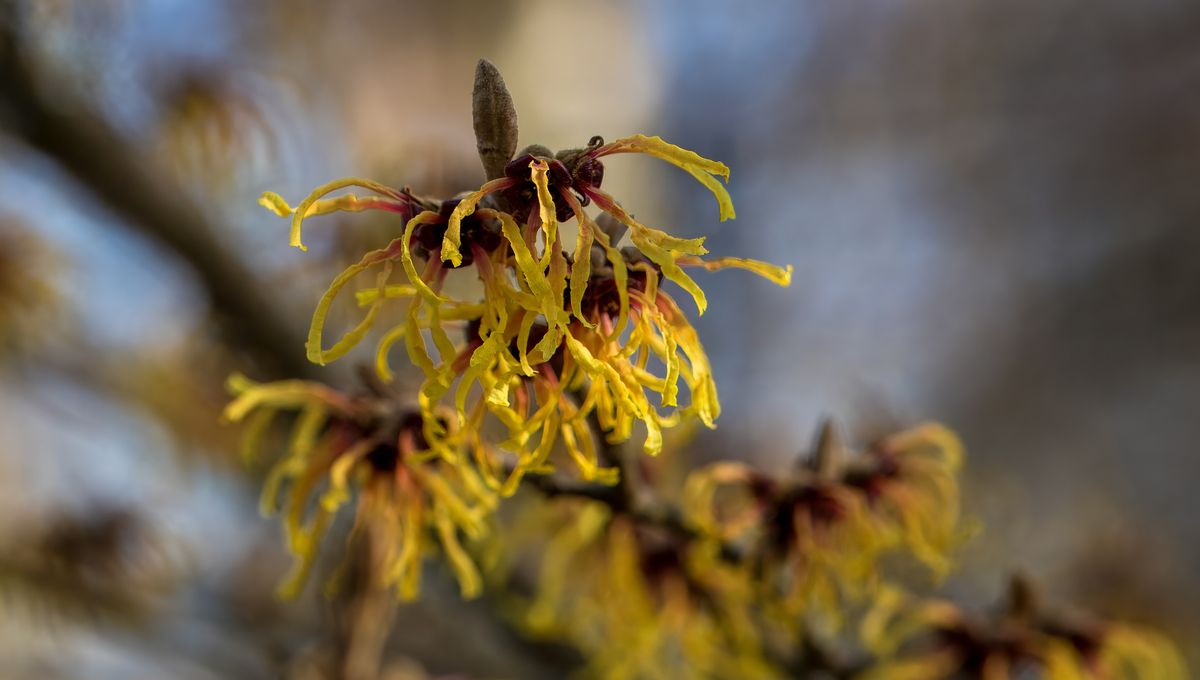
It’s easy to think of the plant world as gentle and calm, but take a closer look and you’ll find plenty of plant life that doesn’t quite fit that perspective. That includes the Chinese witch hazel (Hamamelis mollis), which scientists have captured squeezing out its seeds with an impressive level of force.
It all started at the University of Freiburg. “By coincidence, we had a twig of this plant in an office, and it started shooting the seeds,” Simon Poppinga, the study’s lead author told The New York Times. “This triggered our interest in it, so we started investigating, and it became more interesting and even more interesting and even more interesting.”
Many plants exhibit ballistochory, a form of seed dispersal characterized by forceful ejection, but using a combination of MRI scans, microscopy, and high-speed camera footage, Poppinga and the team were able to figure out exactly how the Chinese witch hazel does it.
They discovered that the fruits of the plant act as “drying squeeze catapults”. As the outer part of the fruit (the exocarp) dries out, it shrinks, whilst the inner part (the endocarp) also changes shape. This puts increasing amounts of mechanical pressure on the seed inside until it shoots out, a mechanism used by the similarly speedy Sphagnum mosses.
When that happens, you can actually hear the connective structures linking the endocarp and the seed together breaking, with what the researchers call a “distinct cracking sound”.
“You hear the crack and then it shoots out,” said fellow author Thomas Speck. “The fascinating thing is there is no explosive mechanism.”
And when the seed goes, it goes. It launches with a force equivalent to approximately 2000g – way, way beyond the G-force that a human could tolerate, not that we’re planning on being thrown out of fruit – and then flies through the air at a maximum of around 27.5 miles per hour (44.3 kilometers per hour). The study suggests that the seeds could even land as far as 18 meters (59 feet) away.
Those are some impressive stats, but what the team found interesting was that the seeds also spun as they flew, some even doing so up to 25,000 revolutions per minute. The authors attributed this to a tiny ridge on the seed – much like how grooves on the inside of a rifle barrel put spin on a bullet.
“We hypothesize that these features increase the dispersal distance of H. mollis seeds,” the team writes in the study. What isn’t entirely clear is why the Chinese witch hazel needs this extra distance, though it’s suspected that it’s because it lives in the undergrowth; firing its seeds further might help it better compete in a potentially less crowded spot.
Not sure what the new neighbors will have to say about the racket it makes, though.
The study is published in the Journal of the Royal Society Interface.
Source Link: The Chinese Witch Hazel Plant Shoots Seeds With Ballistic Force